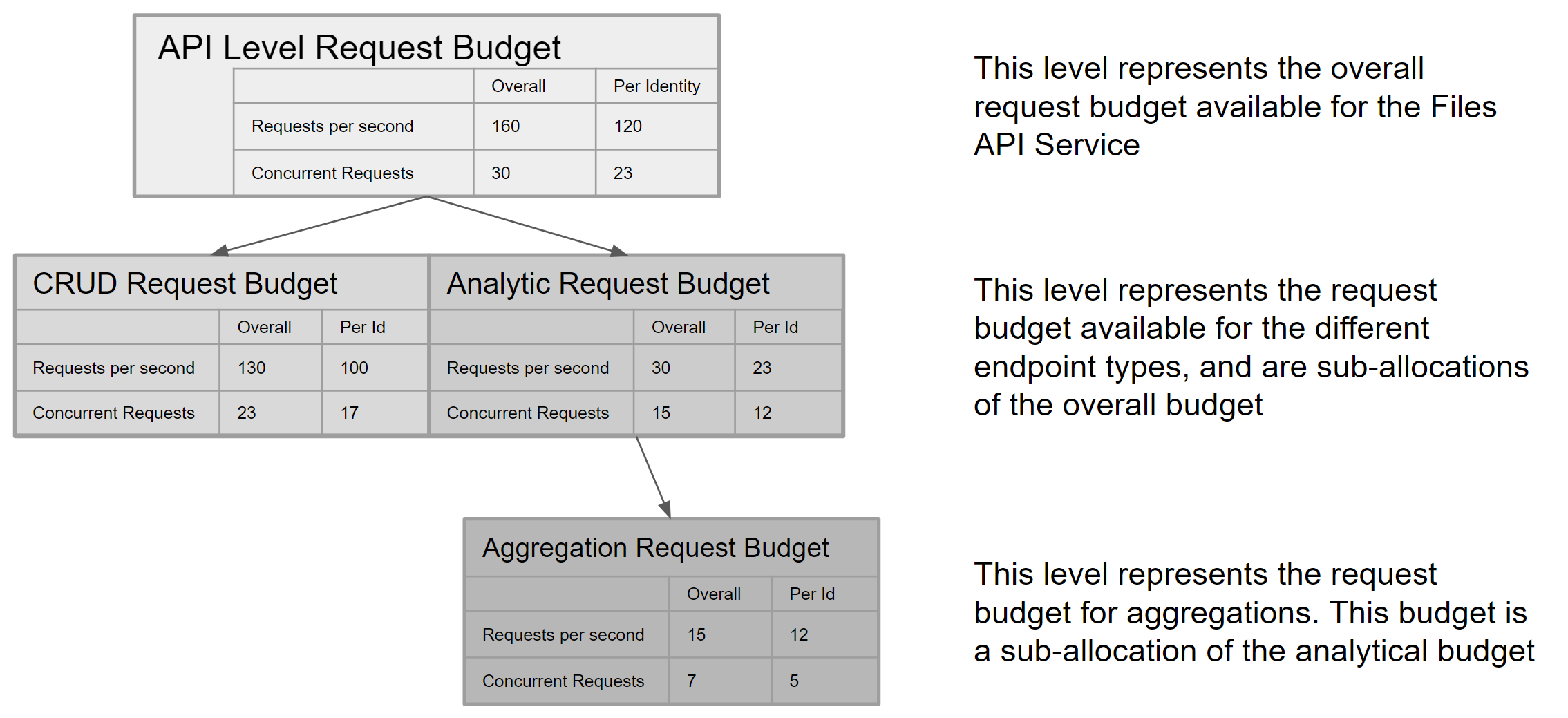A file stores a sequence of bytes connected to one or more assets. For example, a file can contain a piping and instrumentation diagram (P&IDs) showing how multiple assets are connected.
Each file is identified by the 'id' field, which is generated internally for each new file. Each file's 'id' field is unique within a project.
The 'externalId' field is optional, but can also be used to identify a file. The 'externalId' (if used) must be unique within a project.
Files are created in two steps; First the metadata is stored in a file object, and then the file contents are uploaded. This means that files can exist in a non-uploaded state. The upload state is reflected in the 'uploaded' field in responses.
Asset references obtained from a file - through asset ids - may be invalid, simply by the non-transactional nature of HTTP. They are maintained in an eventual consistent manner.
Both the rate of requests (denoted as request per second, or ‘rps’) and the number of concurrent (parallel) requests are governed by limits,
for all CDF API endpoints. If a request exceeds one of the limits,
it will be throttled with a 429: Too Many Requests response. More on limit types
and how to avoid being throttled is described
here.
Limits are defined at both the overall API service level, and on the API endpoints belonging to the service. Some types of requests consume more resources (compute, storage IO) than others, and where a service handles multiple concurrent requests with varying resource consumption. For example, ‘CRUD’ type requests (Create, Retrieve, Request ByIDs, Update and Delete and similar) are far less resource intensive than ‘Analytical’ type requests (List, Search and Filter) and in addition, the most resource intensive Analytical endpoint of all, Aggregates, receives its own request budget within the overall Analytical request budget. The version 1.0 limits for the overall API service and its constituent endpoints are illustrated in the diagram below. These limits are subject to change, pending review of changing consumption patterns and resource availability over time:

A single request may retrieve up to 1000 items. In the context of Files, 1 item = 1 file record Therefore, the maximum theoretical data speed at the top API service level is 160,000 items per second for all consumers, and 120,000 for a single identity or client in a project.
As a general guidance, Parallel Retrieval is a technique that should be used where due to query complexity, retrieval of data in a single request session turns out to be slow. By parallelizing such requests, data retrieval performance can be tuned to meet the client application needs. Parallel retrieval may also be used where retrieval of large sets of data is required, up to the capacity limits defined for a given API service. For example (using the Files API request budget):
- A single request may retrieve up to 1000 items
- Up to 23 requests per second may be issued for an analytical query (per identity), such as when using /list or /filter API endpoints
- This provides a theoretical maximum of 23,000 items read per second per identity
- The query complexity may result in it taking longer than 1s to read or write 1000 items in a single request
- Therefore, it is appropriate to specify the query to retrieve a lower number of items per request, and retrieve more items in parallel, up to the theoretical maximum performance of 23,000 items per second.
Important Note: Parallel retrieval should be only used in situations where, due to query complexity, a single request flow provides data retrieval speeds that are significantly less than the theoretical maximum. Parallel retrieval does not act as a speed multiplier on optimally running queries. Regardless of the number of concurrent requests issued, the overall requests per second limit still applies. So for example, a single request returning data at approximately 18,000 items per second will only benefit from adding a second parallel request, the capacity of which goes somewhat wasted as only an additional 5,000 items per second will return before the request rate budget limit is reached.